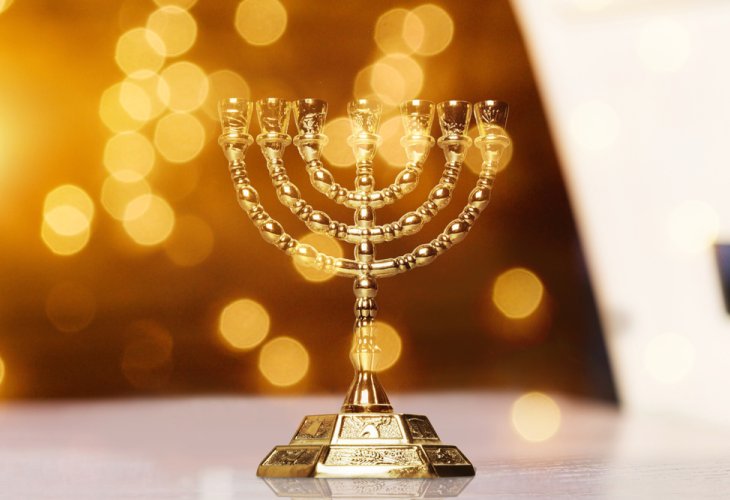Facts in Judaism
The Mystery Behind the Menorah: 10 Things You Didn't Know About This Jewish Symbol
Discover fascinating secrets and facts about the Menorah, from its unique design to its deep symbolism, in an intriguing journey through Jewish history
 (Photo: shutterstock)
(Photo: shutterstock)1. The menorah was made from one single piece of pure gold, meaning it wasn't poured into a mold or soldered. Instead, it was sculpted and hammered with a chisel until it became a natural gold mass in the shape of a menorah.
2. The menorah had twenty-two cups: three on each branch and four on the central branch; eleven knobs: six on each branch and five on the central branch; and nine flowers: six on the six branches and three on the central branch.
3. The cups were decorated, meaning that they had drawings and designs on them, as Rashi explains. The Ibn Ezra adds that the drawings were of almonds; almond illustrations were drawn on the cups.
4. The menorah was positioned in the southern part of the Mishkan (Sanctuary) opposite the shulchan (Table of Showbread), and, since the menorah is a sign of wisdom, the Sages said: One who seeks wisdom should face south, meaning one should turn his face slightly southward during prayer.
5. The menorah had three steps so that the kohen gadol (high priest) could reach the top and light it. The menorah was three cubits tall, about the height of an average person, so the kohen gadol would ascend the steps so he could work in a dignified and comfortable manner.
6. The menorah had a special set of tools, including tongs to remove yesterday's wicks, shovels to scrape away ash and oil remnants, cups to pour the new oil, and a special oil jug that was placed on the middle step. All the vessels were made of gold.
7. There is a special mitzvah (commandment) to prepare the menorah in the morning and evening before it is lit. Before lighting, a regular kohen, who won the lottery that day, would take the remains from yesterday's lighting and prepare the lamps for lighting. At first, he would prepare five lamps, and then, at a second stage, he would prepare the remaining two lamps.
8. The menorah was lit with pure virgin olive oil, meaning the first and finest drop of oil pressed from an olive; anything that came out afterward is not pure enough for lighting. Accordingly, they collected the first drops pressed from all the olives in special vessels that were kept for the menorah.
9. During the terrible decrees passed in the days of Antiochus, a Jew named Joseph Meshita was tempted by the Greeks' promise and brought the menorah to them, thinking he would receive a portion of the gold.
10. Already in the Hasmonean period, the menorah functioned as a Jewish symbol. It is found on coins, in burial caves, and later in synagogues and on Jewish books. The menorah also has Kabbalistic aspects. In fact, according to the kabbalists, Psalm 67, "Lamnatzeach B'neginot" is written in the shape of a menorah, and this has great significance.

